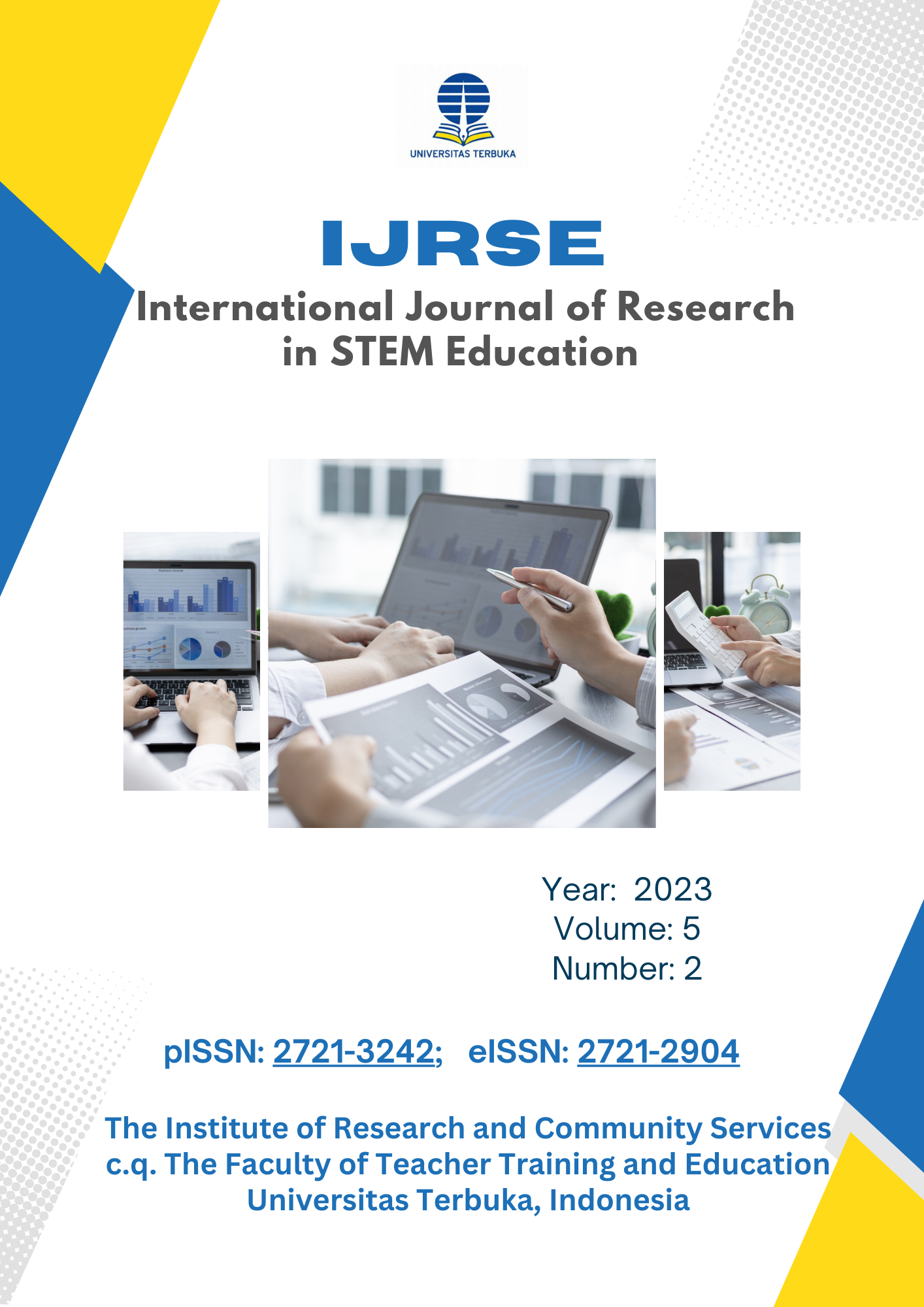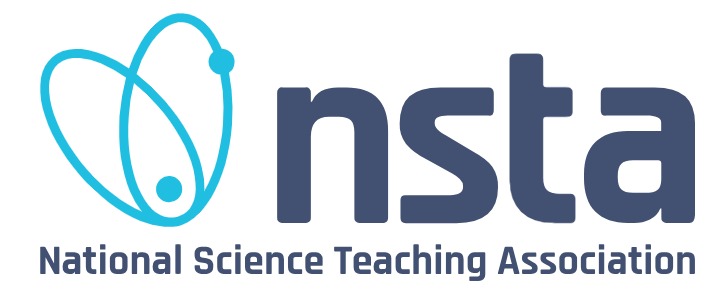Integrating Technological and Educational Collaborations: Enhancing Leadership and Participation in STEM Fields
DOI:
https://doi.org/10.33830/ijrse.v5i2.1595Keywords:
STEM Leadership Advancement, Underrepresented Groups, Collaborative Efforts, Convergent Sequential Mixed Method, Afrocentric ApproachAbstract
This study investigates the advancement of underrepresented groups in leadership roles within the fields of Science, Technology, Engineering, and Mathematics (STEM), areas traditionally dominated by their male counterparts. Through a convergent sequential mixed method, data was collected using 105 questionnaires and six semi-structured interviews involving students, lecturers, government officials, and university admissions administrators in the STEM disciplines. A concurrent triangulation strategy was applied for simultaneous quantitative and qualitative data analysis, utilizing MS Excel for the numerical data and thematic analysis for the narrative information. The research also examined statistical documents to assess the enrollment disparity among underrepresented groups and the presence of specific development programs in universities aimed at addressing this imbalance. Findings suggest that targeted and culturally informed collaborative efforts can effectively encourage the ascent of underrepresented demographics into STEM leadership roles in South African universities. The implications of the study are broad, given that the research spanned two distinct universities, implying that the strategies identified could inform actions across different educational institutions to foster inclusivity and equality in STEM leadership.
References
Accenture. 2014. “Accenture Technology Vision 2014 Identifies Six IT Trends Driving Digital Power Shift as Large Enterprises Assume Role of Digital Disrupters.” Newsroom. 2014. https://sl.ut.ac.id/Lt7bLdwj3K
Akinsowon, O.A. & Osisanwo, F.Y. (2014). Enhancing interest in sciences, technology and mathematics (STEM) for the Nigerian female folk. International Journal of Information Science, 4(1):8–12. https://doi.org/10.5923/j.ijis.20140401.02
Allen, P.J., Lewis-Warner, K. & Noam, G.G. (2020). Partnerships to transform STEM learning. https://files.eric.ed.gov/fulltext/EJ1249559.pdf [Accessed 13 July 2022].
Botha, J., Kiley, J., Truman, K. & Tshilongamulenzhe, M.C. (2013). Practising training and development in South African organisations. (2nd edition). CapeTown: Juta. https://sl.ut.ac.id/rhohKCiSxc
Corporate Planning and Policy Directorate Natural Sciences and Engineering Research Council of Canada. Women in Science and Engineering in Canada. www.nserc-crsng.gc.ca/_doc/Reports-apports/WISE2017_e.pdf
Crosby, B.C. & Bryson, J.M. (2004). A leadership framework for cross-sector collaboration.https://www.tandfonline.com/doi/abs/10.1080/14719030500090519. [Accessed 13 July 2022].
Cummings, L.M. (2015). USAID from the American people, gender equality in science, technology, engineering agricultural sciences and mathematics (STEAM) academic pipeline: challenges transferring knowledge to practice. 30 September.https://www.usaid.gov/sites/default/files/USAID-Report-Sep-30-2015-Final
Desjardins, L.M. (2019). The Present State of Things: Class Struggle in the 21st Century. University of South Florida, St. Petersburg. https://digitalcommons.usf.edu/honorstheses/244/
Ferguson, K.E. (2017). The Annual Review of Political Science. University of Hawaii Honolulu. Annual Review of Political Science: Ingenta Connect Publication. https://www.annualreviews.org/content/journals/polisci
Freeman, B., Marginson, S. & Tytler, R. (2015). The age of STEM: Educational policy and practice across the world in science, technology, engineering and mathematics. New York: Routledge. https://www.routledge.com/The-Age-of-STEM-Educational-policy-and-practice-across-the- world-in-cience/Freeman-Marginson-Tytler/p/book/9781138696068
Gutsell, J.N. & Remedios, J.D. (2016). When men lean out: Subtle reminders of child- raising intentions and men and women's career interests. Brandeis University, USA, Tufts University. Journal of Experimental Social Psychology; 28-33. https://sl.ut.ac.id/QtJY3DfA1M
Jakes, P.J. (2013). Dual enrolment as a factor from women transitioning into STEM majors in Montana two-year colleges. University of Montana. https://scholarworks.umt.edu/etd/4128
Kenneth, A. (2022). Gaps in STEM Education: Why is there a decline in Women Participation. International Journal on Research in STEM Education. Volume 4. No 1. 55 – 63. May 2022. https://doi.org/10.31098/ijrse/v4i1.369.
Kivunja, C. & Kuyini, A.B. (2017). Understanding and Applying Research Paradigms in Educational Contexts. University of New England. Australia. Online Published: September 5, 2017. https://doi.org/10.5430/ijhe.v6n5p26.
Kusmawan, U. (2018). Online Microteaching: a Multifaceted Approach to Teacher Professional Development. Journal of Interactive Online Learning. https://www.ncolr.org/jiol/issues/pdf/15.1.3.pdf
Kusmawan, U. (2022). A Virtual Lab As A Vehicle For Active Learning Through Distance Education. International Journal of Research in STEM Education (IJRSE), 4(2), 18-38. https://dx.doi.org/10.31098/ijrse.v4i2.1188
Muchie, M. (2015). STEM for African development. DST/NRF research professor on Innovation and Development, TUT, Human Sciences Research Council Seminar. https://sl.ut.ac.id/a3JX0zfCIO
O’Dea, A. & Corcoran, M. (2014). Powering economic growth: Attracting more young women into science and technology. Silicon Republic: Women Invent Tomorrow. https://sl.ut.ac.id/2bIX5i0d0a
Research Council of Canada. (2010). Women in Science and Engineering in Canada. Canada. Ottawa, Ontario. November 2012. https://sl.ut.ac.id/eDTVDGZwKx
Shin, Y. & Lee, J. (2017). Predictors of career decision self-efficacy: Sex, socioeconomic status (SES), classism, modern sexism and locus of control. Journal of Career Assessment, 1–16. https://doi.org/10.1177/1069072716658649
Sociology 250. (1999). Marx’s Theory of Social Class and Class Structure. https://uregina.ca/~gingrich/s28f99.htm
South Africa. Department of Higher Education and Training. (2015). Staffing South Africa’s universities framework: A comprehensive, transformative approach to developing future generations of academics and building staff capacity. Pretoria. Government Printer. https://sl.ut.ac.id/TXjsYxrNt3
South Africa. Department of Women. (2015). The status of women in the South African economy. Pretoria: Government Printer. https://sl.ut.ac.id/BBK7rYNAXo
South Africa. National Planning Committee. (2011). National Development Plan: A vision for 2030. Brand South Africa. https://sl.ut.ac.id/ZQoIGVXV6t
South Africa. The Presidency. (2011). National Development Plan 2030: Executive Summary. Pretoria: Government Printer. https://sl.ut.ac.id/DlrtHAUg02
Terre Blanche, M., Durrheim, K. & Painter, D. (2006). Research in practice: Applied methods for the social sciences. (2nd edition). Cape Town: University of Cape Town Press. https://www.scirp.org/reference/referencespapers?referenceid=1426287
UNESCO. (2016). Closing the gap in STEM: Drawing more girls and women into science, technology and engineering. Education Thematic Brief. August. (Asia Pacific, UNESCO). https://unesdoc.unesco.org/ark:/48223/pf0000245717

Downloads
Published
How to Cite
Issue
Section
License
Copyright (c) 2023 Lineo Toolo

This work is licensed under a Creative Commons Attribution-NonCommercial 4.0 International License.
Content Licensing, Copyright, and Permissions
1. License
International Journal of Research in STEM Education (IJRSE) adopts the Creative Commons Attribution-NonCommercial 4.0 International License (CC BY-NC 4.0) as the optimal license for the publication, distribution, use, and reuse of scholarly works for non-commercial purposes.
The non-commercial use of the article will be governed by this license, which allows others to share and adapt the work provided proper attribution is given to the author(s) and the journal.
Creative Commons Attribution-NonCommercial 4.0 International License.
Creative Commons License: CC BY-NC 4.0
2. Author's Warranties
The author warrants that the article is original, written by the stated author(s), has not been published before, contains no unlawful statements, does not infringe the rights of others, is subject to copyright vested exclusively in the author, is free of any third-party rights, and that all necessary written permissions to quote from other sources have been obtained by the author(s).
3. User Rights
The International Journal of Research in STEM Education aims to disseminate published articles as freely as possible. Under the Creative Commons license, users are permitted to copy, distribute, display, and perform the work for non-commercial purposes only, provided that proper attribution is given to the author(s) and this journal.
4. Rights of Authors
Authors retain the following rights:
- Copyright and proprietary rights related to the article, such as patent rights.
- The right to use the substance of the article in future works (e.g., lectures, books).
- The right to reproduce the article for personal purposes.
- The right to self-archive the article.
- The right to enter into separate, additional non-exclusive contractual arrangements for the distribution of the article’s published version (e.g., posting to an institutional repository or publishing it in a book), with acknowledgment of its initial publication in IJRSE.
If the author has a non-exclusive publishing contract with another publisher under a more restrictive license, the author still retains all rights to republish or distribute the work elsewhere, including commercially, as the author is not bound by the license conditions imposed on the journal.
5. Co-Authorship
If the article has multiple authors, the signatory of this agreement warrants that he/she has been authorized by all co-authors to sign this agreement on their behalf and agrees to inform all co-authors of the terms of this agreement.
6. Termination
This agreement may be terminated by either the author or IJRSE with two months’ notice if the other party has materially breached this agreement and failed to remedy such breach within one month after receiving written notice.
No breach or violation of this agreement will cause automatic termination or affect the license granted to IJRSE.
7. Royalties
This agreement entitles the author to no royalties or other fees. To the extent legally permissible, the author waives the right to collect royalties in respect of any use of the article by IJRSE or its sublicensees.
8. Miscellaneous
IJRSE will publish the article (or have it published) once the editorial process has been successfully completed.
The journal reserves the right to edit the article for style, punctuation, spelling, capitalization, referencing, and consistency as deemed appropriate.
The author acknowledges that the article will be made publicly accessible, and such access will be free of charge for readers.







